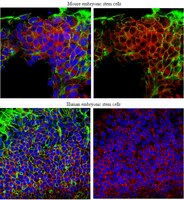AB10180 Sigma-AldrichAnti-Pumilio-1 (PUM1) Antibody
This Anti-Pumilio-1 (PUM1) Antibody is validated for use in WB, IC for the detection of Pumilio-1 (PUM1).
More>> This Anti-Pumilio-1 (PUM1) Antibody is validated for use in WB, IC for the detection of Pumilio-1 (PUM1). Less<<Recommended Products
Áttekintés
| Replacement Information |
|---|
Kulcsspecifikációk táblázata
| Species Reactivity | Key Applications | Host | Format | Antibody Type |
|---|---|---|---|---|
| H, M, R, B, Rhesus Macaque, Chp, Pm | WB, ICC | Rb | Affinity Purified | Polyclonal Antibody |
| References |
|---|
| Physicochemical Information |
|---|
| Dimensions |
|---|
| Materials Information |
|---|
| Toxicological Information |
|---|
| Safety Information according to GHS |
|---|
| Safety Information |
|---|
| Storage and Shipping Information | |
|---|---|
| Storage Conditions | Stable for 1 year at 2-8°C from date of receipt. |
| Packaging Information | |
|---|---|
| Material Size | 100 µL |
| Transport Information |
|---|
| Supplemental Information |
|---|
| Specifications |
|---|
| Global Trade Item Number | |
|---|---|
| Katalógusszám | GTIN |
| AB10180 | 04053252699863 |
Documentation
Anti-Pumilio-1 (PUM1) Antibody Certificates of Analysis
| Title | Lot Number |
|---|---|
| Anti-Pumilio-1 (PUM1) - NRG1727463 | NRG1727463 |








